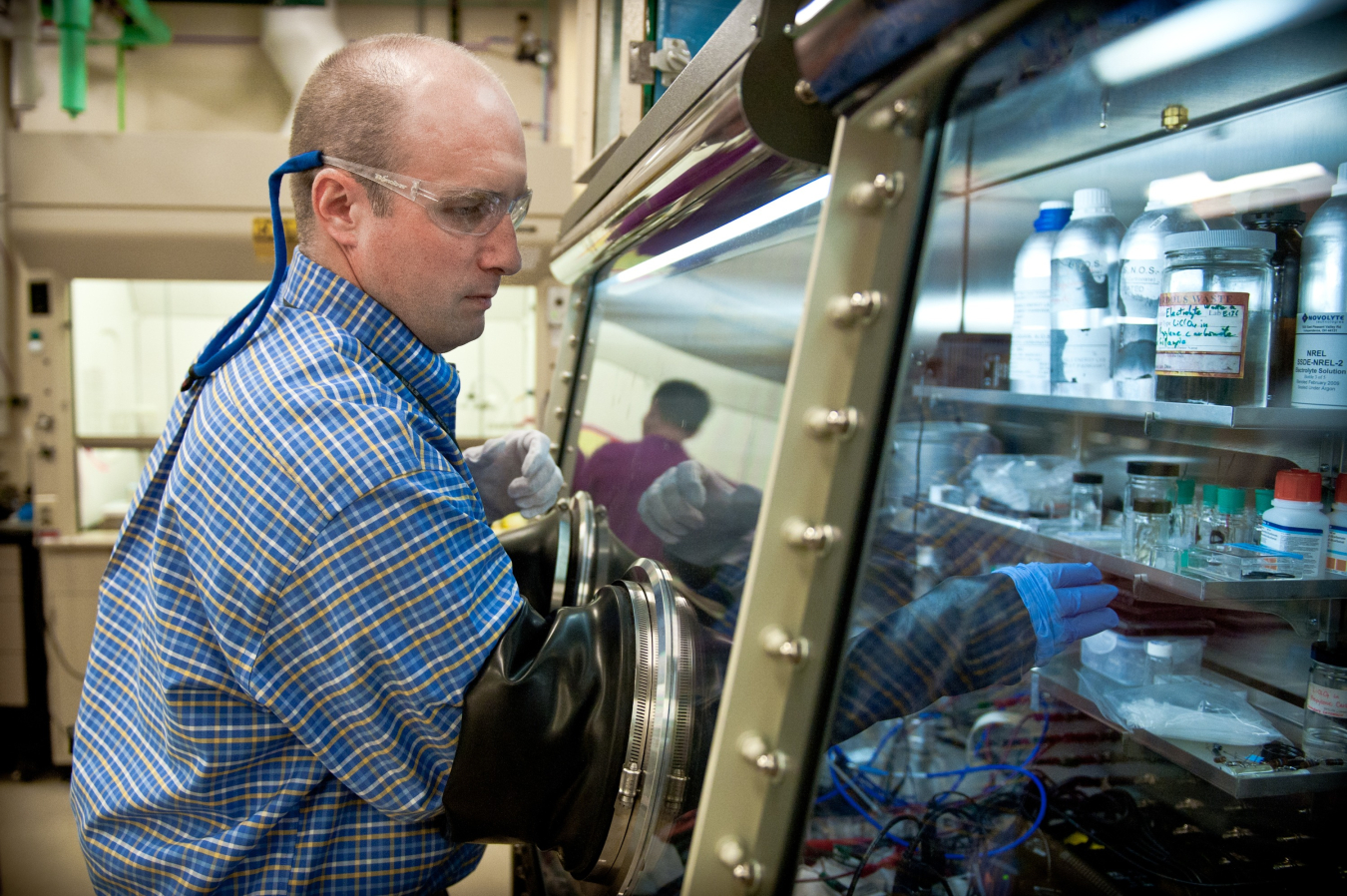The Emerging Technologies program supports innovative, early-stage R&D projects that de-risk the critical technical issues for next-generation energy
April 4, 2017
National Renewable Energy Laboratory (NREL) researcher in the lab. Image courtesy of NREL.
The Energy Department’s Building Technologies Office (BTO) Emerging Technologies program supports innovative, early-stage research and development (R&D) projects that de-risk the critical technical issues for next-generation energy-efficiency technologies. Oftentimes, after these projects “graduate” from BTO, they still require more R&D, testing, and demonstrations before they can be commercialized and installed in real buildings. Recently, some BTO R&D projects have partnered with the Wells Fargo Innovation Incubator (IN2) to work toward this goal.
A Road Less Traveled
The road from R&D to market entry is often long, challenging, and unpredictable. Many technologies in the building industry, for example, follow a much longer path to market than in other areas, often taking 10-25 years to achieve market adoption. The U.S. housing sector typically underinvests in the R&D needed to improve building energy performance, with R&D funding for construction amounting to just one-10th of the U.S. industry average.1 BTO helps to overcome this challenge by supporting promising new, early-stage energy efficient technologies. IN2 is an example of the private sector building on the research from BTO’s Emerging Technologies program by partnering with the National Renewable Energy Laboratory (NREL) to provide technical assistance for further prototype development and the expertise to assess, test, and validate technologies. Their innovative program seeks to move promising building technologies from the lab to the marketplace by increasing investment in technology development and demonstration.
New Pathways to Success
IN2 is a five-year, $10 million program that fosters innovative, early-stage commercial building energy technologies. IN2 is funded by the Wells Fargo Foundation, co-administered by NREL, and it relies on input from more than 40 innovation and research partners when selecting companies for participation. NREL excels in supporting the building industry to be competitive in a rapidly changing market. Through building and system science, NREL researchers help entrepreneurs develop game-changing technologies and mitigate market barriers. Some of the current support NREL researchers are providing Wells Fargo IN2 projects include prototype testing in laboratory and real-world settings, conducting usability analysis and characterization, performing computer simulations to determine potential energy and cost savings, analyzing value proposition, and supporting field studies.
At the end of the five-year program, three cohorts of innovative small businesses will have been given the opportunity to test, validate, and incubate their technologies with the help of NREL’s world-class facilities and researchers. These critical validation efforts move the technologies closer to market acceptance, and companies that graduate from the incubator with commercially ready products may have the opportunity to beta test their technology in a real-world environment, as well as conduct a pilot deployment in select Wells Fargo locations.
Investing in the Future of Building Technologies
To date, numerous BTO-funded projects have participated in the IN2 program:
- Heliotrope is developing a neutral-colored dynamic glass solution that seeks to achieve cost neutrality with conventional window solutions.
- Thermolift’s natural gas-driven heat pump combines heating, cooling, and hot water supply—reducing primary building energy use by as much as 50%.
- Transformative Wave is developing a battery storage retrofit for commercial buildings that optimizes ongoing revenue with 15-30% energy savings and 20-40% peak demand reduction.
- Maalka’s modeling platform reduces the time and cost of accurately modeling and simulating large portfolios of buildings by over 90%.
- simuwatt is a web- and tablet-based application for conducting rapid energy audits and analysis.
- Ibis Networks addresses plug load management with its patented InteliNetwork system, enabling customers to save up to 40% of energy costs on managed equipment.
All of the former BTO projects described above continue to receive outside funding to strive toward market adoption, demonstrating that multiple industry stakeholders believe in the merit and potential impact of these technologies. BTO provided support to these small businesses at the beginning of their journey, and the Wells Fargo Innovation Incubator is now helping them to take the next step. While it may still be a few years before these technologies become market-ready, they are already impacting the building industry by demonstrating what is possible and striving to achieve a level of performance that existing products have not yet met.
To learn more about BTO’s current R&D portfolio, visit the Emerging Technologies website.
NREL Windows Research: Now and Then
- Since pioneering dynamic "smart" windows research that started in 1983, NREL researchers discovered electrochromism in tungsten oxide, which dominates the industry.
- NREL helped develop and demonstrate a new reflectance switching dynamic window technology that was licensed to e-Chromic Technologies.
- In developing the next generation of “smart” windows, NREL is adding improved functionality to smart windows by including power generation to combining dynamic window functionality with solar generation through the SwitchGlaze technology.
- Through IN2, NREL is partnering with Heliotrope and Polyceed to develop solutions for dynamic windows that can compete with conventional windows economically.
.....................
1 Wolfe, Raymond M. (2013). Business Research and Development and Innovation: 2008-10 Detailed Statistical Tables. NSF 13-332. Arlington, VA: National Center for Science and Engineering Statistics. Accessed September 24, 2014: http://www.nsf.gov/statistics/nsf13332/pdf/nsf13332.pdf.

